A Book Arts Mosaic (2005)
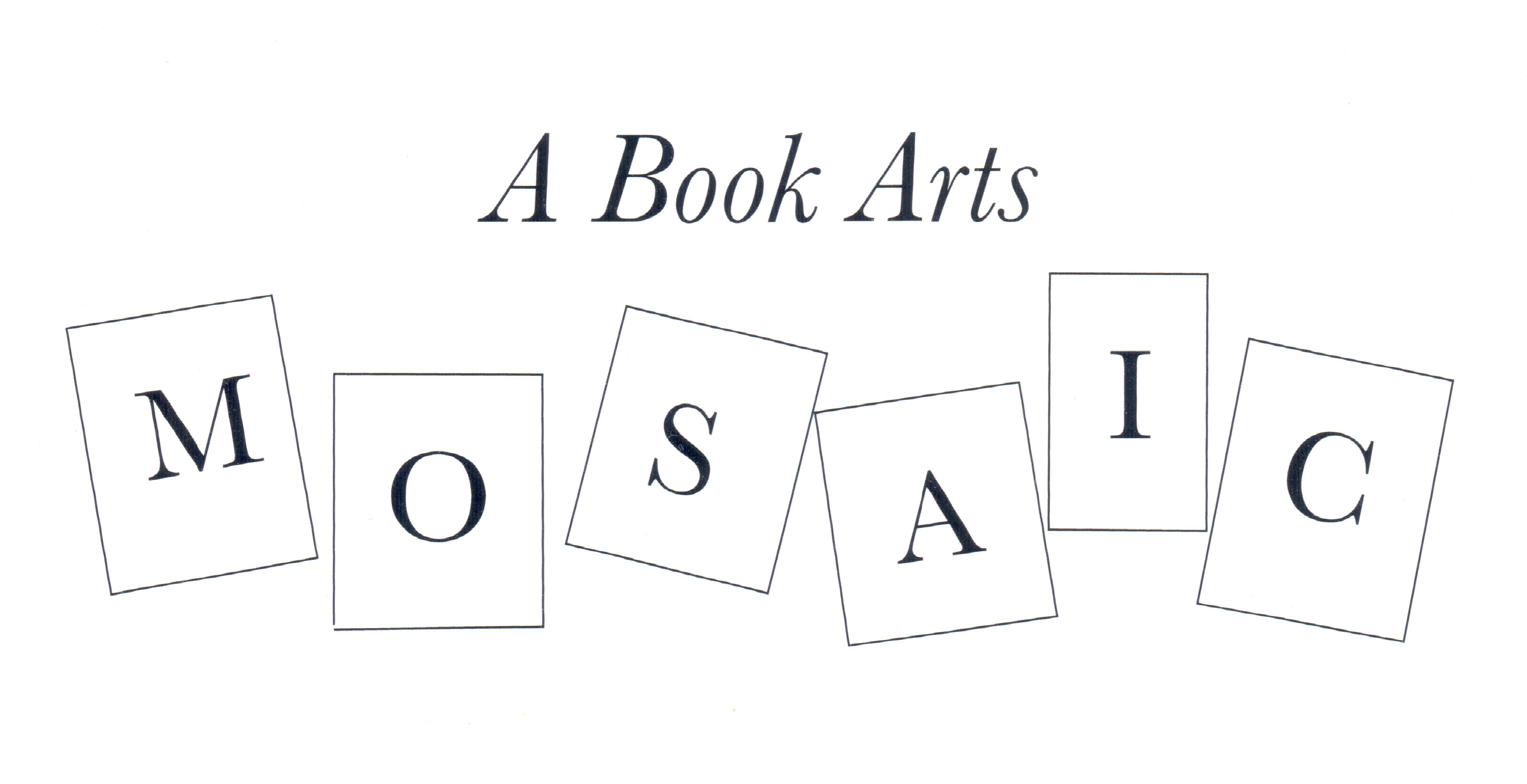
A Book Arts Mosaic is curated by Lise Melhorn-Boe and features twenty-six works by thirty-three Canadian book artists from across Canada. This community exhibition was presented in a box portfolio and was available for loan by small galleries, museums, libraries, and schools.
Overview | Participants | The Exhibition | Curator's Statement: Lise Melhorn-Boe
Overview
A Book Arts Mosaic, curated by Canadian book artist Lise Melhorn-Boe, is available for exhibition and/or as a teaching tool. It is suitable for small galleries and museums, libraries and archives, schools, and other locations.
A Book Arts Mosaic consists of 26 pieces (33 including all of the pamphlets included in the work Feasts) by 38 Canadian book artists (see list of artists below). The collection includes pieces which are delightful or beautiful, moving or inspiring, amusing or thought provoking, and in toto provide ideas and stimulation, suitable for a wide viewing public and for students and instructors.
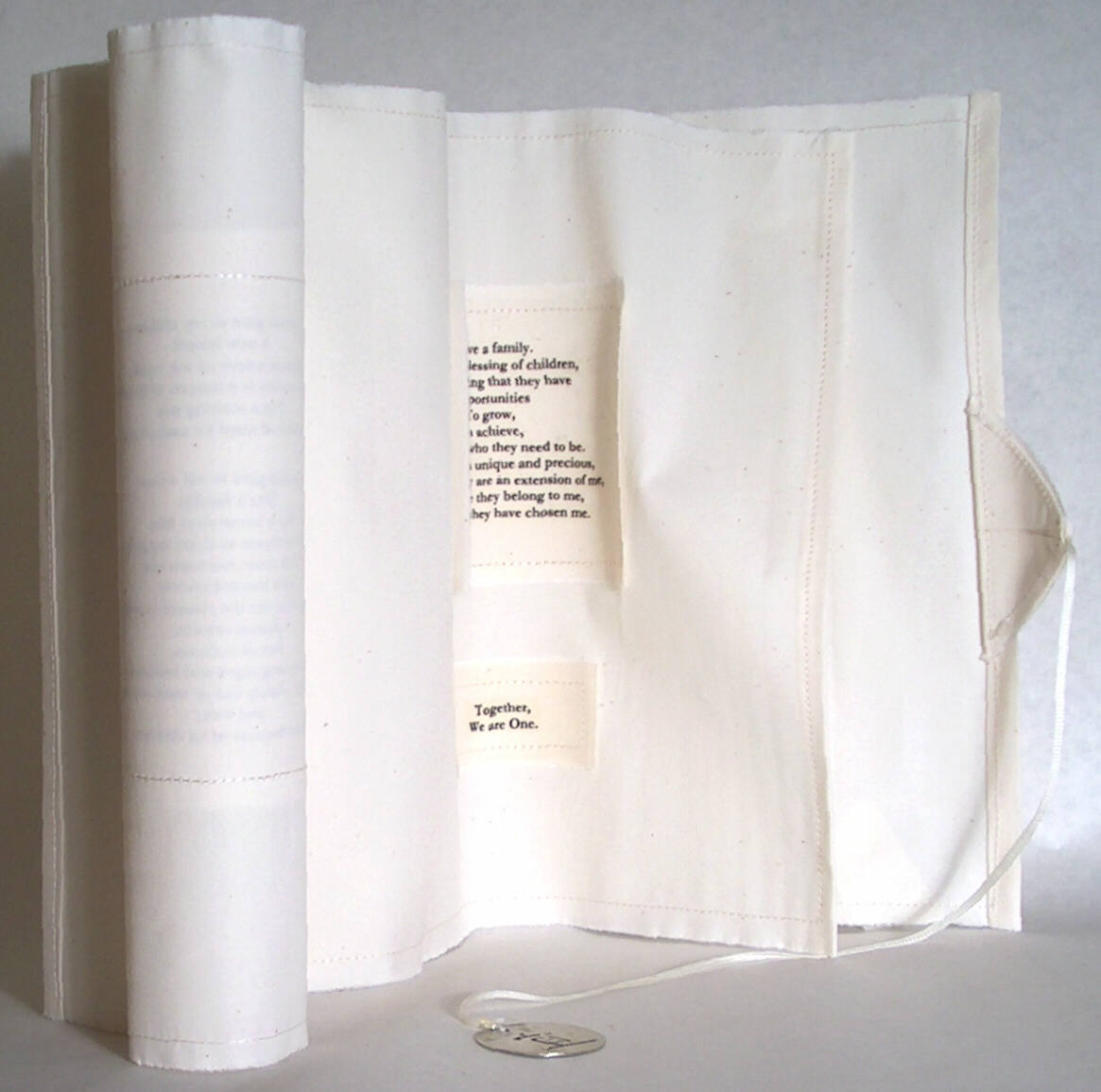
Included are examples of structures such as of accordian, tunnel, miniature, Coptic, Japanese stab binding, open lectern, and Chinese whirlwind books, as well as pamphlets and broadsides. Techniques include handmade paper with and without watermarks, calligraphy, blind tooling, incised decoration, paper decorating (including marbling, paste, sponge paper and stencil, hand cut rubber stamps, hand painting, etc.), letterpress printing, linocut, hand printed lithography, xylography, wax resist, collage, and many contemporary techniques and technologies such as machine perforation, polyester resin casting, digital printing on film, digitized photographs, offset printing, giclée printing, and computer layout. Materials include fused glass, knitted copper wire, curled paper ribbon, thongs, frosted acrylic, transfer paper bonded to unbleached cotton, painted wood, leather, paper, and many others.
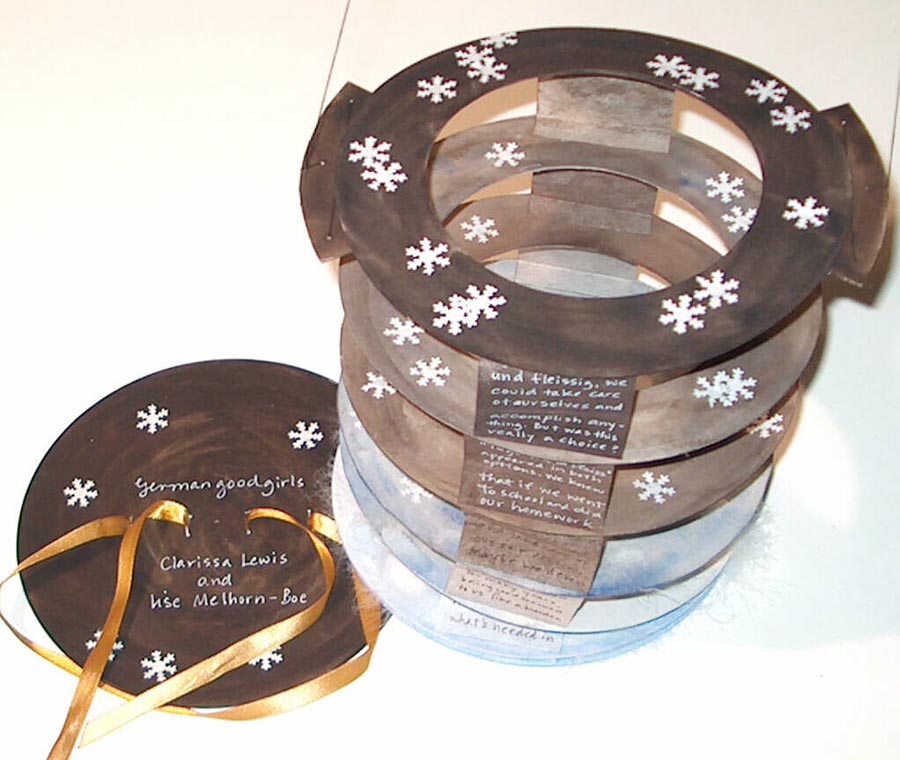
A location fee of $100 is charged venues. Venues must insure the exhibition while it is on-site. As well, venues are responsible for the cost of insured shipping from and returned to Toronto. The shipping charge to the venue from Toronto will be invoiced by CBBAG unless venues have their own account with a shipper.
For more information contact cbbag@cbbag.ca
Participants
Jocelyne Aird-Bélanger Joe Blades Ingrid Hein Borch Sarah Butt Joan Byers, Dorothy Field, and Virginia Porter Susan Carr Stephanie Dean-Moore Karen & Geoffrey Hewett Susan Warner Keene Trisha Klus Clarissa Lewis & Lise Melhorn-Boe Judy Martin |
Anne Graham McTaggart Cathryn Miller Micheline Montgomery Jane Morgan Akemi Nishidera The Ottawa Press Gang: Susan Globensky Holly Dean & Larry Thompson Roberta Heubener Grant Wilkins April Flanders Richard Coxford Britt Quinlan |
Rob Richards Anik See Shanty Bay Press: Walter Bachinski & Janis Butler Shelagh SmithPeter Sramek Ann Stinner Judith Welbourn & Derek Chung Robert Wu |
The Exhibition
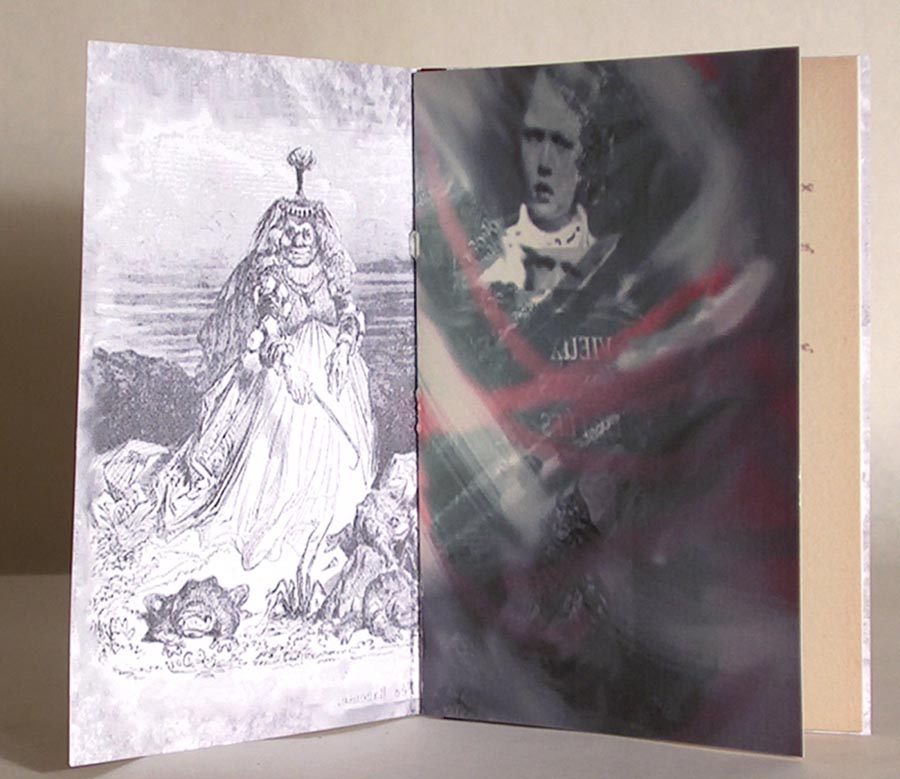
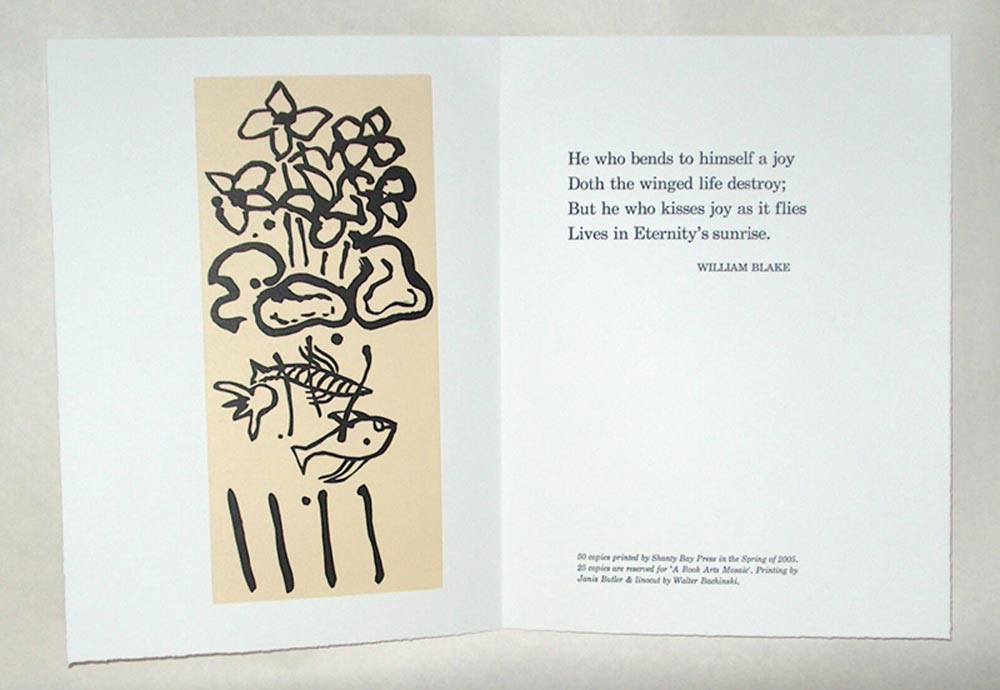
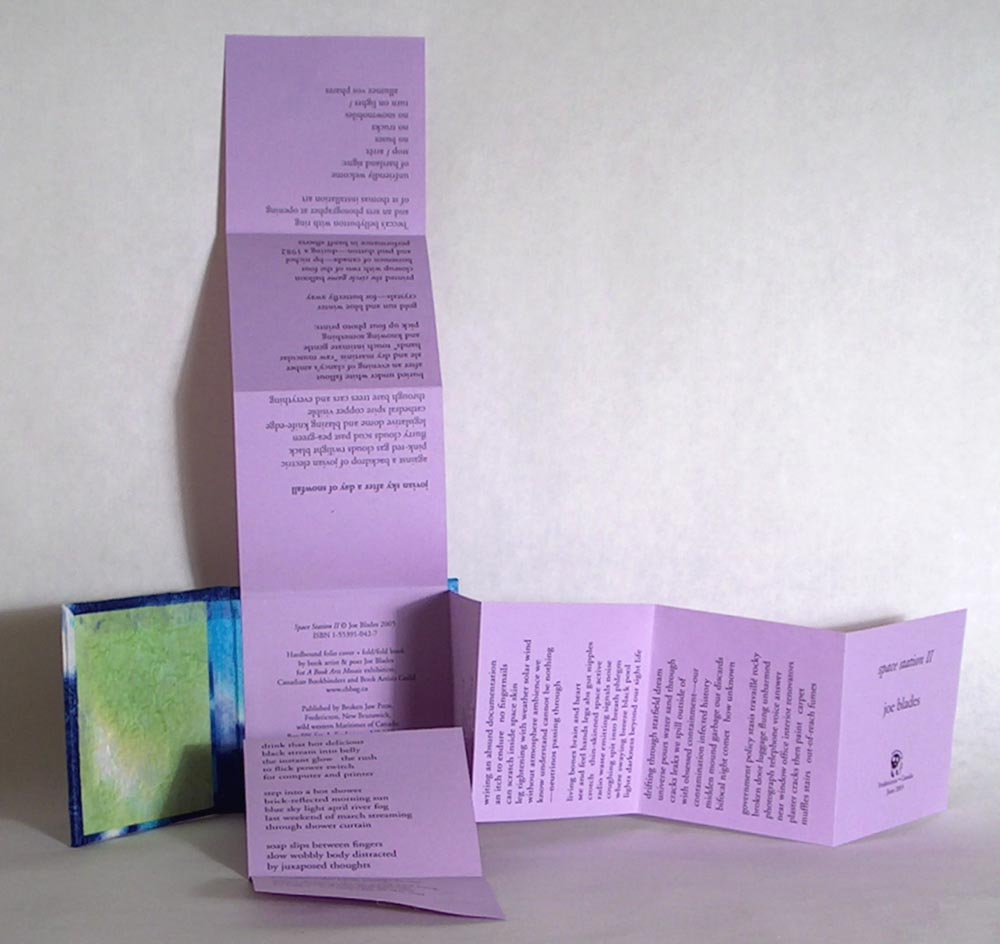
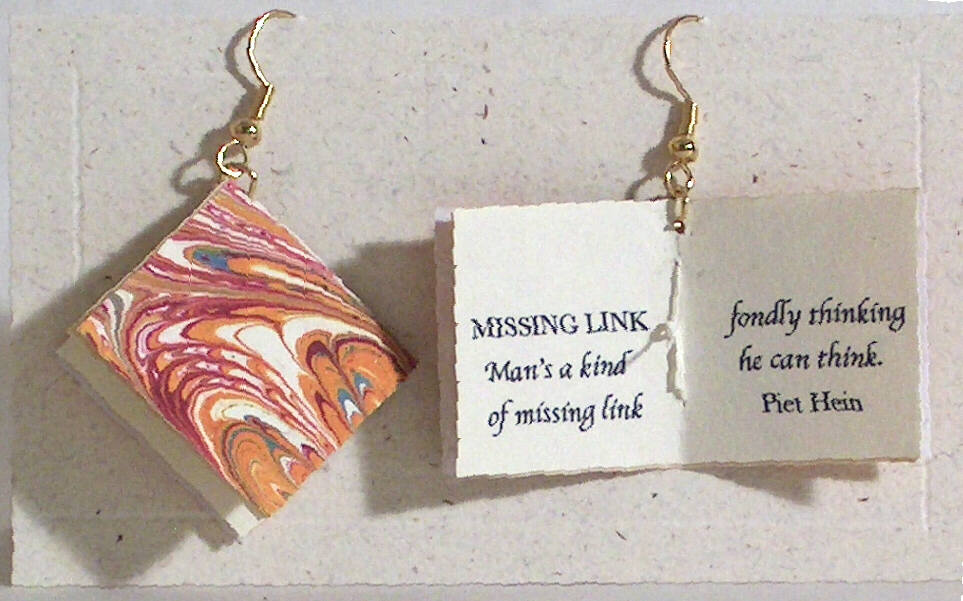
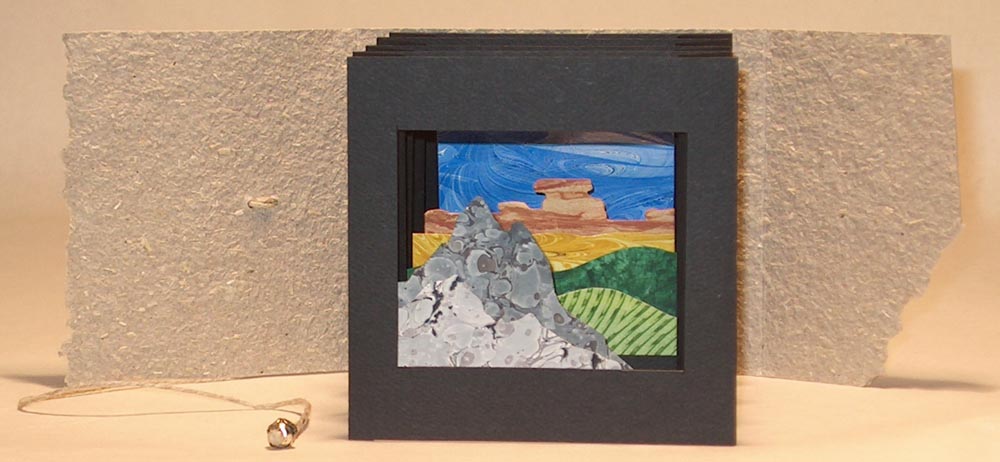

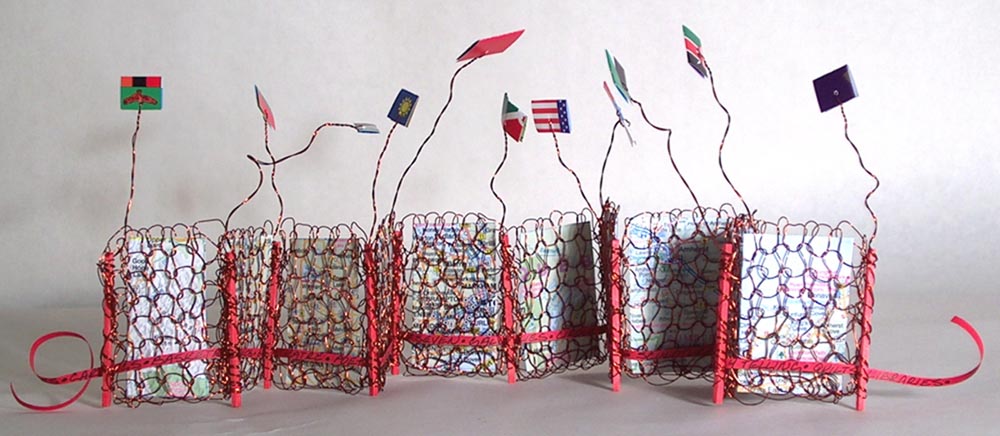
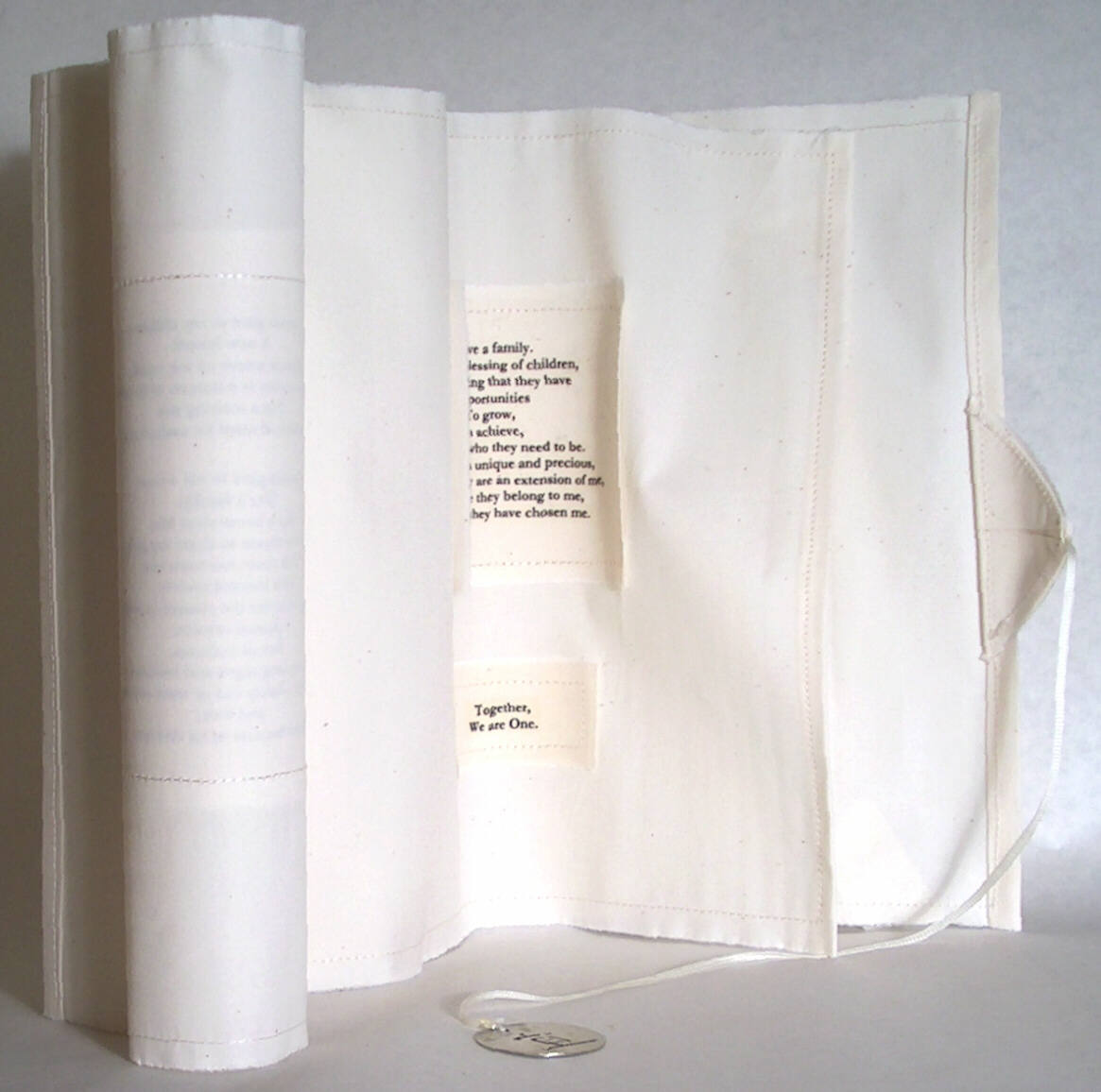
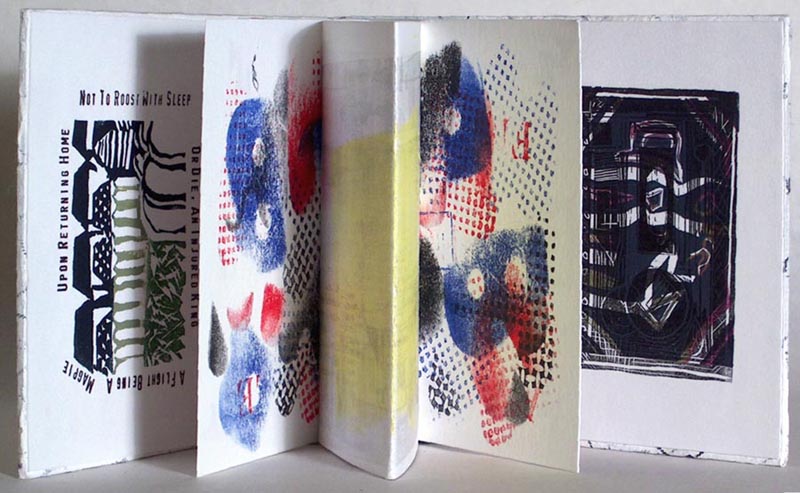
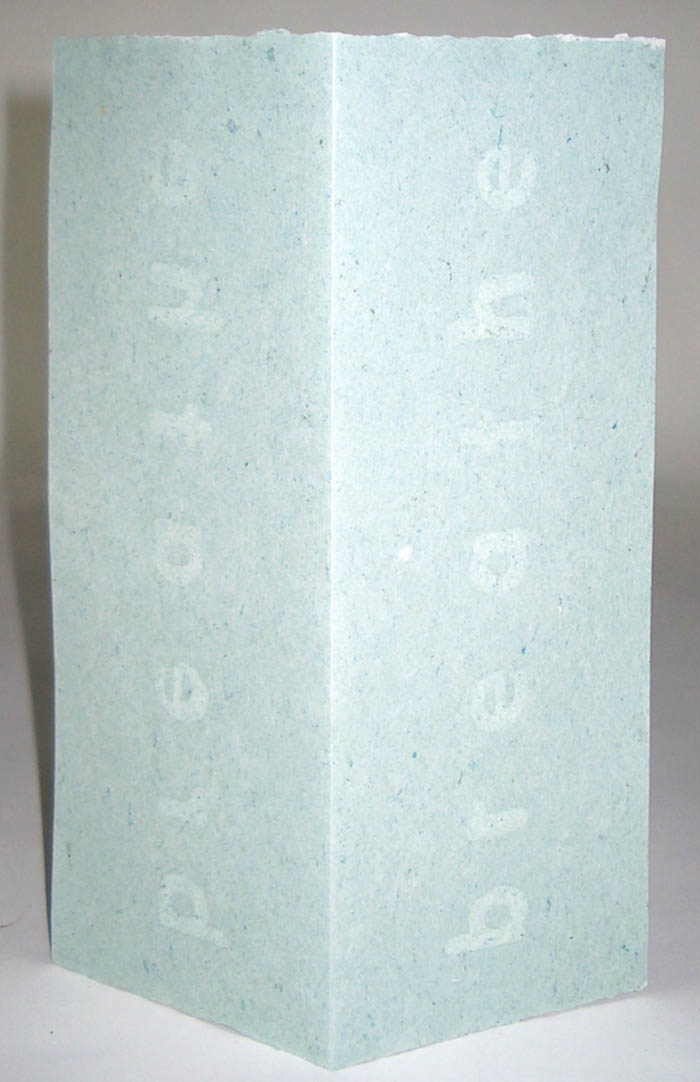
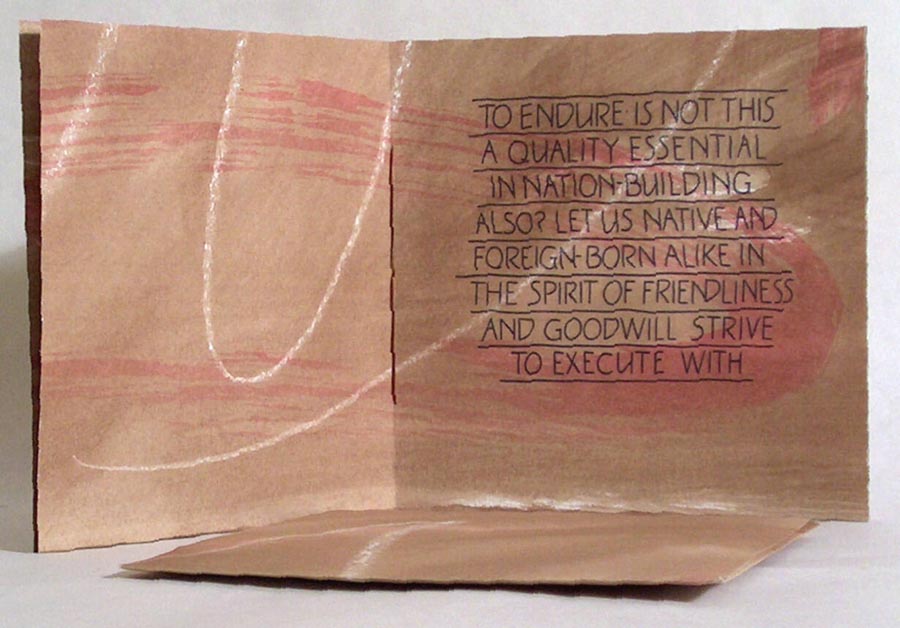

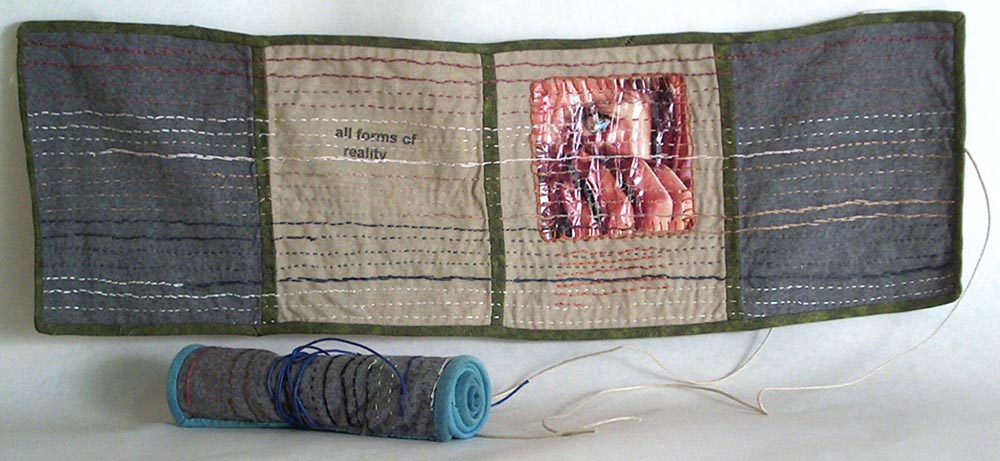
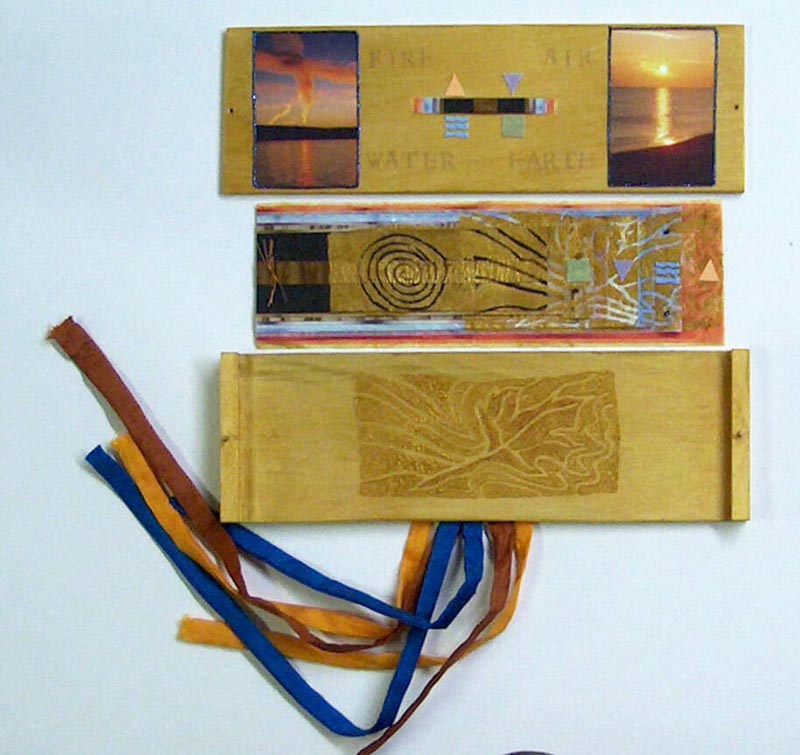
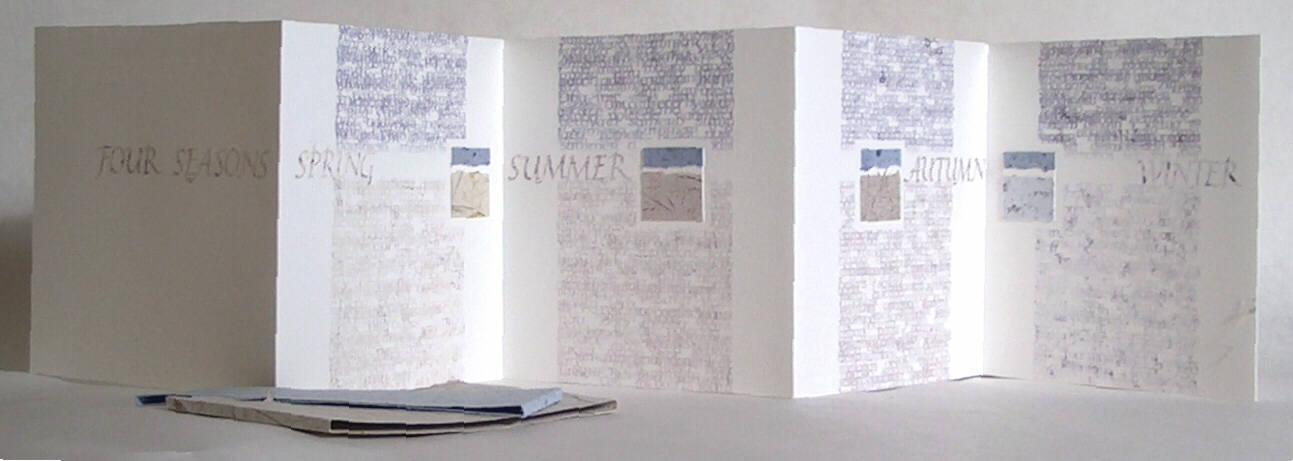
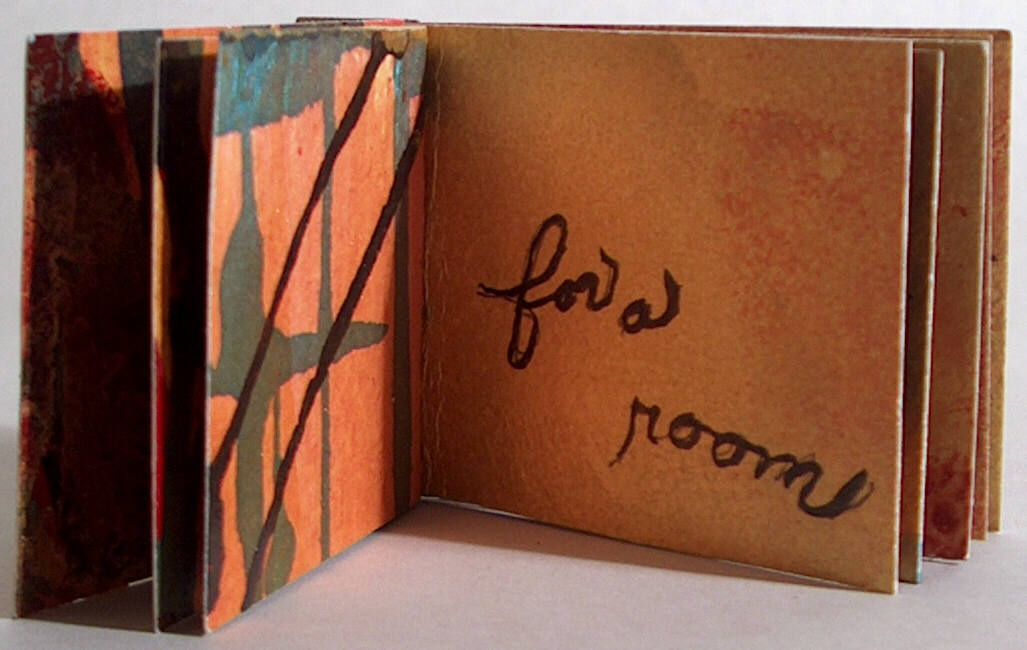
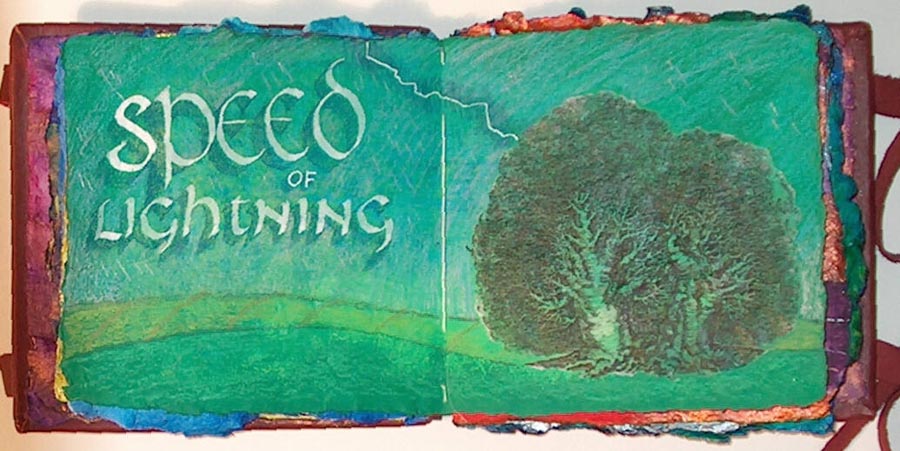
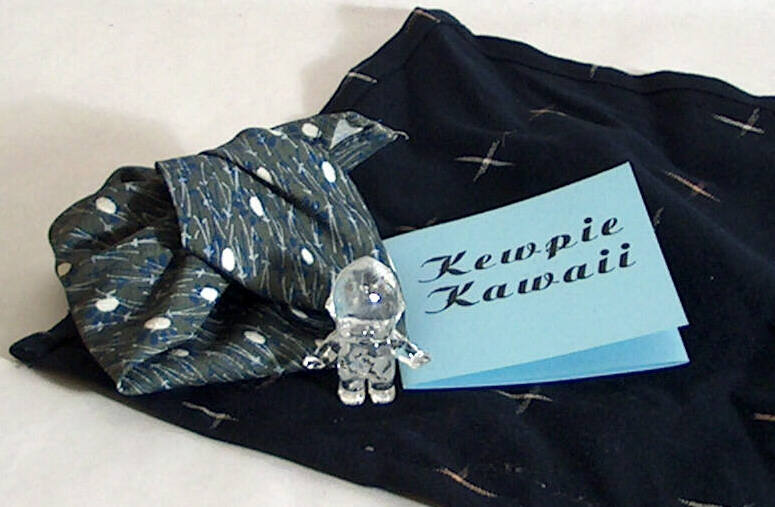
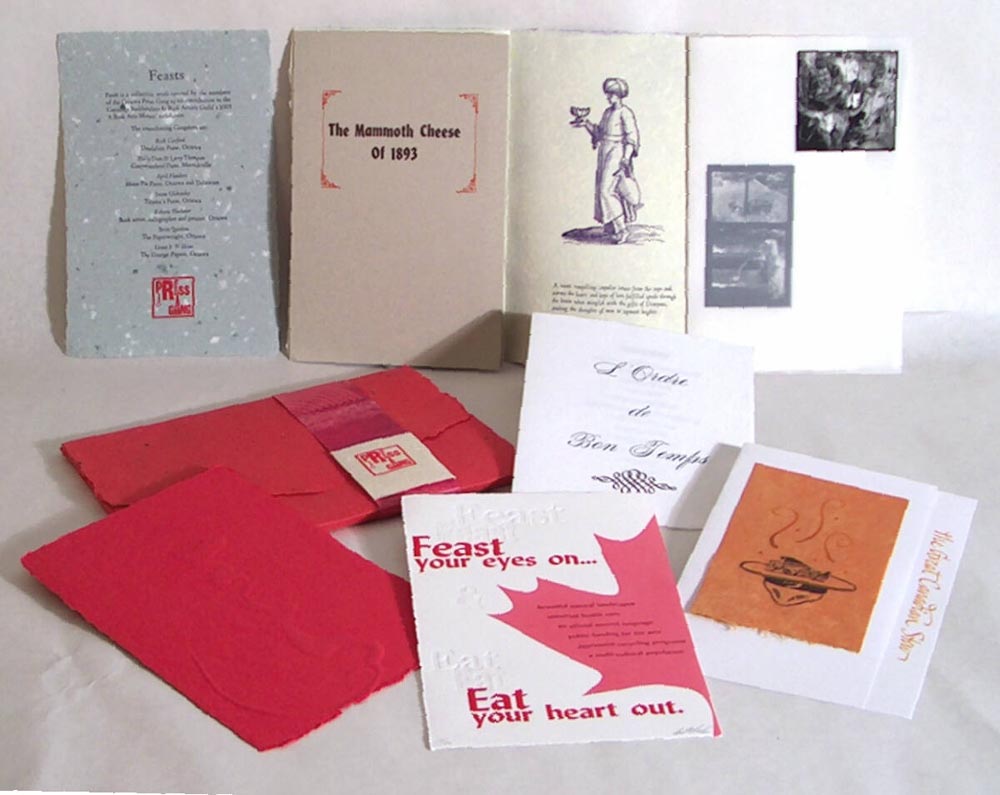
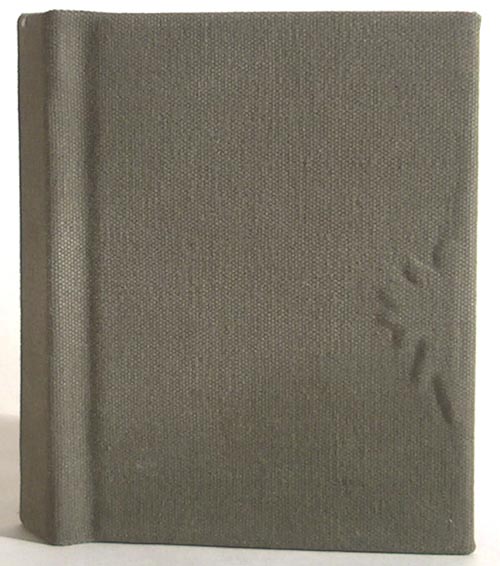
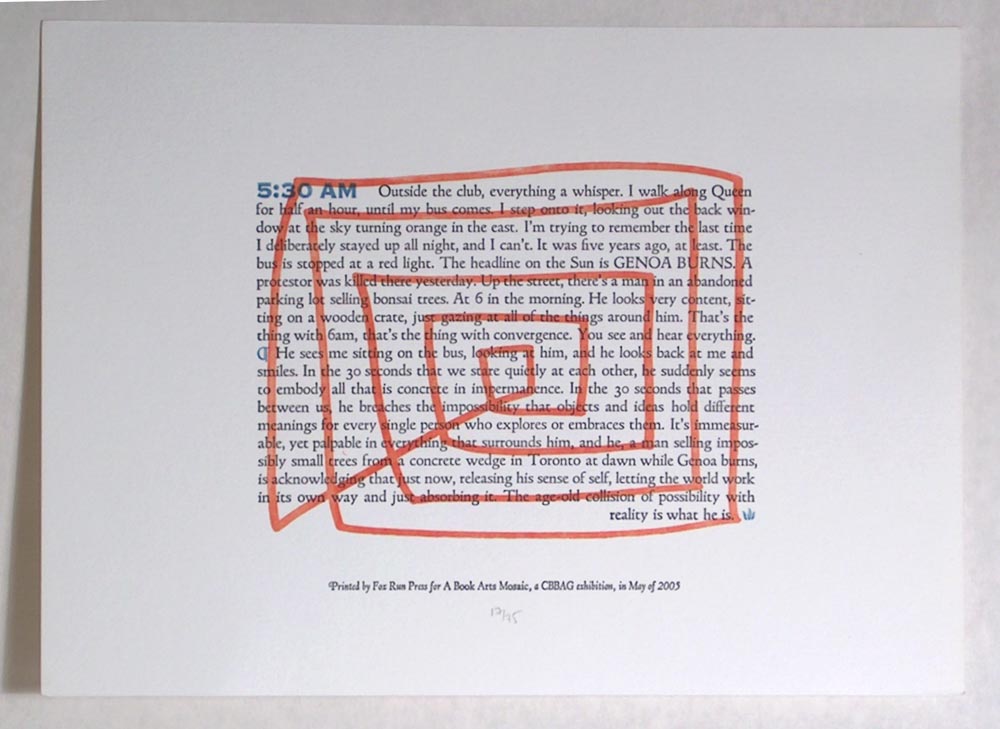
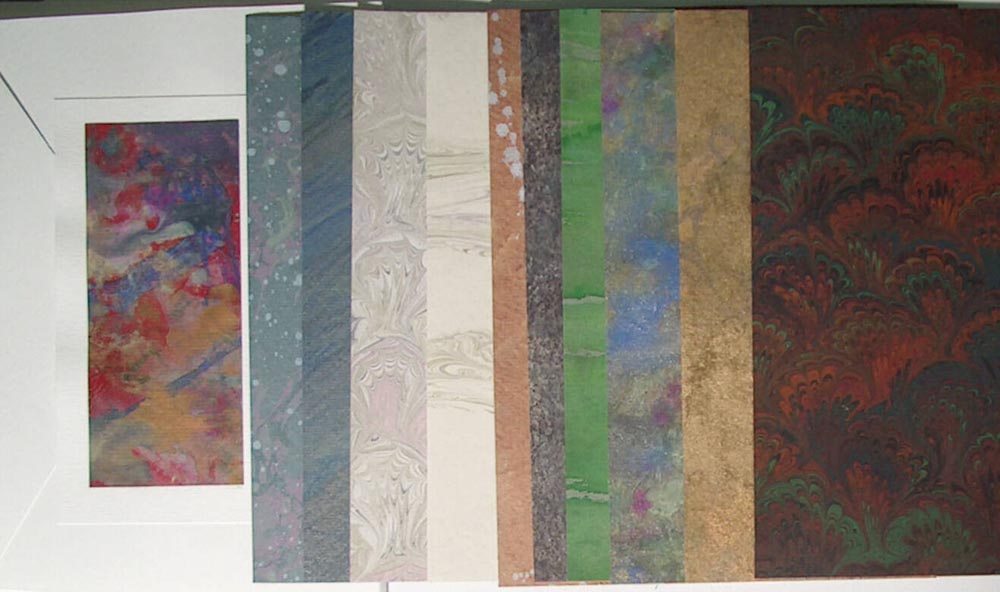

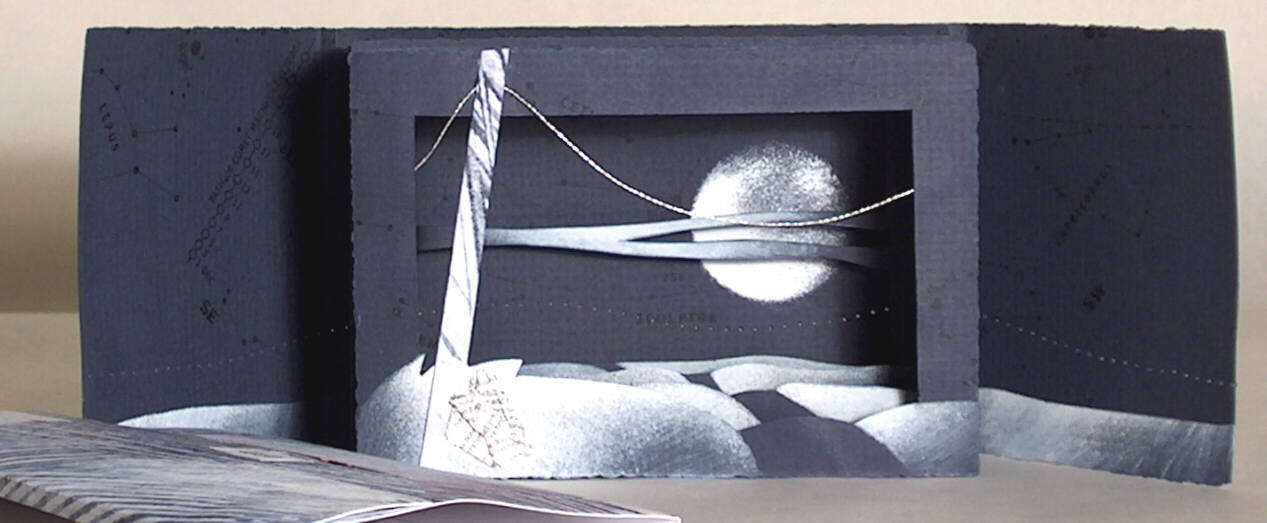
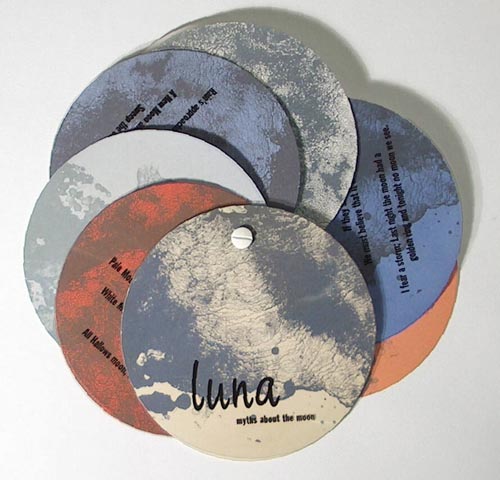
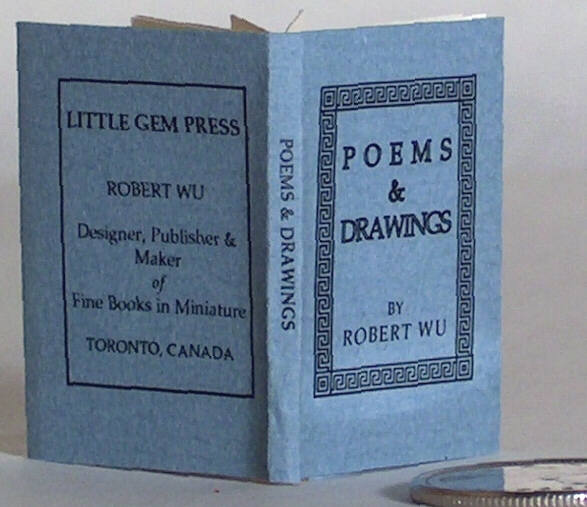
Curator's Statement by Lise Melhorn-Boe
“Mosaic is the true painting for eternity.” These words of Ghirlandaio set forth one of the outstanding characteristics of
mosaic — its capacity to endure. Is not this a quality essential in nation-building also? Let us native and foreign-born alike
in the spirit of friendliness and goodwill strive to execute with meticulous care the pattern revealed to us by the master craftsmen
so that our Canadian Mosaic may be “practically indestructible,” so that it may endure!
These words of Kate Foster, from 1926, form the text of Our Canadian Mosaic, Trish Klus's contribution to A Book Arts Mosaic. This collection was conceived to present the great variety of techniques and materials used by members of the Canadian book arts community. As curator, I chose a representative group of CBBAG members, with people from all parts of the country. I invited them to produce a piece of work that addressed the theme of the “Canadian Mosaic,” referring to the ethnic and cultural diversity of the country. The contributions fall into three general categories: those relating to a sense of place; those concerned with the Canadian experience; and those dealing with spirituality.
Many contributors chose to use Canada itself — the land — as inspiration. Margaret Atwood wrote about this same trend in Canadian literature, in her seminal book Survival. She says:
But in Canada...the answer to the question “Who am I?” is at least partly the same as the answer to the question:
“Where is here?” “Who am I?” is a question appropriate in countries where the environment, the “here,” is already
well-defined, so well-defined in fact that it may threaten to overwhelm the individual…
“Where is here” is a different sort of question. It is what a man (sic) asks when he finds himself in unknown
territory…we need to know about here, because here is where we live. For members of a society, shared knowledge
of their place, their here, is not a luxury but a necessity.
Without that knowledge we will not survive.i
In A Book Arts Mosaic, some of that shared knowledge is very specific, such of Dorothy Field's poem Let us praise the Garry Oak, a tree with which I was not familiar. Joan Byers and Virginia Porter have letterpress printed this very evocative poem — ”Whose bark is Braille, Whose leaves, lobed as lungwort, unfold like rusty hands” are the opening lines — in their book of the same title. West to East, a tunnel book by Sarah Butts, looks at Alberta's landscape from the mountains to the badlands. Others are more general in scope. Canadian Canvas, by Rob Richards, is a blank book, with covers made from his family's canvas bags, which they used when camping in the 1950s and 1960s. Susan Carr uses actual maps as background for her hand-written text highlighting Canadian cultural icons, such as totem poles, arenas, and Le Cirque du Soleil. The weather emerges as part of the landscape as well. Shelagh Smith felt that “Weather is seminal to everything that's happened in Canada.”ii Her beautiful collection of decorated papers evokes the entire year of Canadian seasons from sleet and ice crystals to fog and heat. Cathryn Miller uses the prairie landscape as a framework upon which to paint the four seasons in sixty different languages.
Language plays an important role in Peter Sramek's digitally printed concertina titled Burning: il cuore aperto. About this work he said, “The languages relate to the languages of women I have had strong attractions to and I suppose the book relates to the theme of the show in an acknowledgement of the cross-cultural nature of desire.”iii In this exquisite and elegant book, Sramek superimposes his poem on very subtle images of a woman's face and hair with shadows and echoes of the text (printed larger and lighter or darker) in three other languages. I especially like the last lines: “I float somewhere / Between heaven / and desolation.” Sounds like Canada to me!
Stephanie Dean-Moore has written a moving text about her two daughters, adopted from China. Near the beginning are the words:
Closer to the end, we read:
Akemi Nishidera would probably agree with Dean-Moore. She writes, “Growing up in Canada and being of Japanese and Philippino heritage, I have never really been treated as a foreigner or non-Canadian here. I am a Canadian.” Her conceptual bookwork Kewpie Kawaii was made in response to her experience of living in Japan. Of that experience, she writes:
I am of Japanese heritage, but I would consider myself very North American in my outlook and day-to-day culture. I speak and
understand very little Japanese. I am much more proficient in French! I met many people who were first or second generation “Foreigners” living in Japan. Culturally they are much more Japanese than I. They have homes, raise their children and work,
all in Japan. However, because they look different, they will always be treated as foreigners by the majority of the Japanese. In
Japan, if you look or sound like a foreigner, you are a foreigner, and thus think like one. But, if you look Japanese, only sound
like a foreigner, then you must be at least a little Japanese, and thus think like one.
For Kewpie Kawai, Nishidera has written, on grains of rice, some of the phonetic sounds that make up the Japanese language, although she has written them in the Roman alphabet to reflect her experiences in Japan of being “included and excluded.” These grains of rice were embedded in a cast polyester resin Kewpie doll, wrapped in fragments of old kimonos.
The Ottawa Press Gang has compiled a delightful portfolio titled Feasts with texts, mainly about food, in a Canadian cultural context, including a description of Perth's Mammoth Cheese of 1893 and a copy of a 1606 menu from Samuel de Champlain's L'Ordre de Bon Temps. Holly Dean and Larry Thompson's very funny recipe for The Great Canadian Stew includes doughnuts, poutine, maple syrup, and of course, Tim Horton's coffee, along with hockey pucks and toques, all served up in a Mountie's hat. April Flanders should be writing ads for the Canadian government:
Feast your eyes on…
beautiful natural landscapes
universal health care
an official second language
public funding for the arts
aggressive recycling programs
a multi-cultural population
& Eat your heart out.v
Also in a light-hearted vein are Judith Welbourn and Derek Chung's Luna: Myths About the Moon and Ingrid Hein Borch's pair of wearable books titled Side by Side.
Several of the contributors explored spiritual aspects of our culture. To Judith Martin, the act of creating her hand-embroidered and quilted scrolls was itself a meditation, and Micheline Montgomery hand-painted her small Japanese-sewn books with the same spiritual intent. Anne Graham McTaggart's Earth, Air, Water, Fire, inspired by Tibetan Buddhist prayer sheets, is a praise-filled prayer for the four elements:Jane Morgan's The Deer's Cry: An Excerpt, is a glorious tribute to the Medieval manuscripts produced in Ireland, the home of some of her ancestors. Susan Warner Keene and, working together, Janice Butler and Walter Bachinski, have contributed works that transcend national boundaries. All of us would do well to “kiss joy as it flies” vi and we all need to take time to centre ourselves and BREATHE.vii
Like a mosaic, the disparate pieces in this collection fit together to give us a picture of the various interests of CBBAG members — from traditional skills such as papermaking and letterpress printing to contemporary ones like polyester casting and digital printing. As well, they form a composite image of our Canadian identity — our sense of place, our heritage and our spirit.
_________________________________________
i Margaret Atwood, Survival: a thematic guide to Canadian Literature (Toronto: Anansi Press) 1972, pp 17-18.
ii Shelagh Smith, Conversation with the artist, August 7, 2005.
iii Peter Sramek, E-mail from the artist, September 10, 2005.
iv Stephanie Dean-Moore, One, 2005.
v April Flanders, Feast, 2005.
vi Shanty Bay Press (Janice Butler and Walter Bachinski,) Eternity, 2005.
vii Susan Warner Keene, Breathe, 2005.

